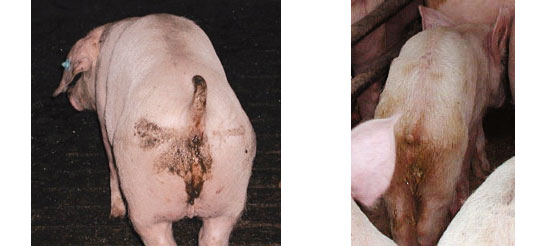The intestinal immune system is composed of epithelial cells, lymphocytes located within epithelium, Peyer’s patches, lamina propria and isolated lymphoid follicles. The small intestine is exposed to rapid changes in the antigen composition; many feed antigens are tolerated but the mucosal barrier maintains its defensive efficiency. In addition, specialized antigen transport mechanisms exist in the villous epithelium.
The development of several intestinal functions, including the mucosal immune system and homeostasis, the absorption of macromolecules and the synthesis of aminoacids and vitamins occur by the contribution of gut microflora. Furthermore, the establishment of normal gut microbial communities can also prevent the colonization of pathogenic microorganisms. For example, the mucus-resident bacteria prevent the attachment of pathogenic organisms by occupying available binding sites.
Gut microorganisms are named microbiota and differ greatly between individuals, but also within different gut segments of the same individual, suggesting that the microflora is in continuous evolution.
There are bacteria that are more persistent, whereas others are rapidly transiting, but both undergo profound changes in ill versus healthy animals. Consequently, the interactions of the intestinal flora with enteropathogenic bacteria are responsible for the development of many inflammatory bowel diseases.
In addition, a correct balance among bacteria can be accomplished through the correct use of probiotics. Their administration appears to be important in modulating the gut microbiota, but they are able to improve the function of the liver and pancreas thanks to distant effects in the abdominal cavity. Using a different mechanism of action probiotics can decrease endotoxin release or block the intestinal absorption of some different mycotoxins.
In some situations, the correlation between the disease state and development of a specific pathogen is not clearly demonstrable; suggesting an overreaction to the animal’s own microflora. This status could evoke in veterinary pathology as well, the concept of dysbiosis recently proposed in human medicine, i.e. an imbalance between protective and harmful intestinal bacteria. A practical example of this modification in pig medicine could be the weaning enteric syndrome, due to an incomplete adaptation of weaners to a new nutritional schedule. Similar problems can also derive from the use of antibiotics per os, when therapies or strategic medication are incorrectly applied.

| Figure 1. Acute enteritis in a young grower pig. See the muco-catarrhal diarrhea and the presence of indigested material. | Figure 2. Hemorrhagic dysentery in a fattening pig. The predisposing role of the feed composition is essential in the onset of the problem. |
On the other hand, studies with germfree animals demonstrate conclusively that in the absence of the normal microbiota, intestinal morphology is altered and the local immune system is underdeveloped. Alterations of immune intestinal parameters in these animals include a decrease in total lymphocyte numbers, altered lymphocyte and antibody profiles, underdeveloped Peyer's patches and mesenteric lymph nodes lacking germinal centers and plasma cells.
Indigenous gut bacteria provide the mammalian host with nutrients, including short-chain fatty acids (SCFA), vitamin K, B vitamins, and amino acids. Research interest in the nutritional benefits provided by the intestinal microbiota of the pig has focused on the types and distribution of anaerobic bacteria in the pig cecum and colon and on their production of SCFA and gases (hydrogen, methane) in response to various dietary energy sources.
The polysaccharides
The interest in the impact of polysaccharides on immunity has increased rapidly over the past decade. A variety of polysaccharides from different natural sources have the ability to modulate the immune system. Among those, β-D-glucans and the α-D-mannans have been recognized to be responsible for modulating the immune responses in mammals through interactions with immunocompetent cells. The direct interaction of β-D-glucans with macrophages and polymorphonuclear cells is a clear example of these immunomodulatory properties, active on innate immunity too.
The effect of polysaccharides on the immune response is strictly dependent on the nature of in contact antigen and then questionable in case of systemic immunization. For example, β-glucans did not enhance the efficiency of a vaccination with PRRS virus or atrophic rhinitis vaccine.
The protective activities of mannans may instead include the ability to adsorb enteric pathogens and to modulate immune functions, enhancing the phagocytic activity of macrophages. Mannan supplementation could also alleviate the inflammatory response associated with the stress of weaning through a decrease of neutrophils / lymphocytes ratio in the bloodstream.
Conclusions
In conclusion, there is increasing optimism about the possibilities of manipulating
the enteric flora composition through nutrition or the use of probiotics, achieving beneficial effects in term of nutrient utilization, epithelial and mucus turnover, detoxification of bacterial catabolites, and continual production of immune cells




